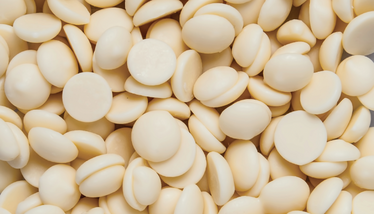Capsules: Make Way for Pastillation
It’s already used for processing powders in many industries; here’s why pastillation should come to pharma next.
Dr Subhashis Chakraborty | | 4 min read | Practical

Credit: Shutterstock
Used in chemical engineering, pastillation has a long history of transforming powders – which are difficult to work with – into solid, uniform pastilles. This makes the compounds easier to use and, in many cases, safer to handle. As an outcome of the melting process, the resulting pastilles are robust and extremely versatile. Today, pastillation is used across multiple manufacturing sectors including chemical, plastic and food.
Although my PhD research recognized pastillation as a potential process to advance drug delivery (1), it has yet to be fully explored by the pharmaceutical sector. Over the course of five points, I’d like to describe how it could be a game-changing process for the industry.
First, improving oral drug delivery. Pastillation technology has the capacity to create unique hemispherical shaped pastilles in a variety of colours which, when filled into transparent capsules, can differentiate one capsule from another. This not only improves the aesthetics of the dosage form, but also reinforces brand recognition and enhances their marketability. This presents a great opportunity for product lifecycle management, especially for products with poor market presence. The vibrant blend of colours and their aesthetic appeal can also overcome the perception of consuming medicines and thus improve overall patient acceptability and compliance.
Second, manipulating release profiles. Another interesting aspect of pastillation is its ability to generate different drug release profiles, including immediate, sustained, or even a combination of both. The drug release profiles are based entirely on the physio-chemical properties of the excipients used as the base for drug delivery. For example, water-soluble, high molecular weight polyethylene glycols (PEGs) are suitable for immediate release, while a variety of water-insoluble solid lipids are suitable for sustained release. When these excipients and the APIs are heated together to form a homogeneous melt, the drug either solubilizes or disperses depending on its physio-chemical behavior. The two types of pastilles obtained can then be filled separately or in the same capsule. Alternatively, pastilles can be formulated using both types of excipients together to customize the drug release as required.
Third, decreasing the quantity of APIs needed. It is well known that if an API melts or dissolves, it turns from a particulate to a molecular state, leading to an exponential increase in surface area. This enhances solubility, helping with quick dissolution, improving permeability, and significantly reducing the barriers for absorption in the body. The increased solubility and permeability offer the potential to reduce the dose of APIs which, in turn, creates an opportunity to minimize adverse effects. Fortunately, pastillation technology provides an avenue to develop drug products with improved solubility and permeability.
Fourth, pastillation is suitable for highly potent APIs (HPAPIs). It is crucial to develop a rigorous and detailed plan for the safe handling of highly potent actives, minimizing direct worker exposure and ensuring the safe management of resulting waste materials to minimize environmental impact. Pastillation provides an excellent method for formulating drug products containing HPAPIs because it involves immediate conversion of powders into melt, resulting in a dust-free process.
Fifth, pastillation technology is also deemed to be an in-line process. Pastillation involves the sequential process of mixing excipients and API, melting, creating pastilles, cooling, capsule-filling and seamlessly progressing to bottling/blistering and packaging without interruption. Continuous manufacturing of pharmaceutical products on a single, uninterrupted production line is highly encouraged by the FDA – largely because it results in minimal human interventions, thus reducing the possibility of errors.
Naturally, there are challenges that need to be overcome for pastillation to become widely used in the formulation of pharmaceuticals and nutraceuticals. Introducing a new product which then needs to go through the entire drug development cycle requires a large upfront investment, coupled with dedicated equipment. Not all companies want to change their manufacturing set up for a new technology. I’d envisage start-up companies looking to ‘disrupt’ the status quo exploring this technology. For example, well-funded entrepreneurs who are looking to introduce novel dosage forms into the market – especially in areas where dose reduction coupled with sustained release is required.
For now, however, I think it is most likely that we will see pastillation be tested in the nutraceuticals and healthcare segments, where it is easier to launch than the more regulated pharmaceutical markets. The pharmaceutical sector may then have visibility of the technique’s progress and successes – and see the benefits it can offer in product differentiation.
Entering the healthcare and pharmaceutical markets with new technologies and processes is not always an easy journey. To reach their full potential and find success, new methods need to prove their value and worth. With its ability to differentiate drugs, improve marketability, and enhance oral drug delivery, I believe pastillation has the potential to be one such technology. Already successful across a wide range of manufacturing sectors, it can save time, money, reduce errors, and simplify production. We’re already seeing the industry look to emerging areas, such as nanotechnology, for formulation advances, so why not look at pastillation which is a far simpler and safer process?
- D Shukla et al., “Pastillation: A novel technology for development of oral lipid based multiparticulate controlled release formulation,” Powder Technology, 209, 65-72 (2011). DOI: 10.1016/j.powtec.2011.02.006
General Manager – Head Global Product Management at ACG Capsules



















